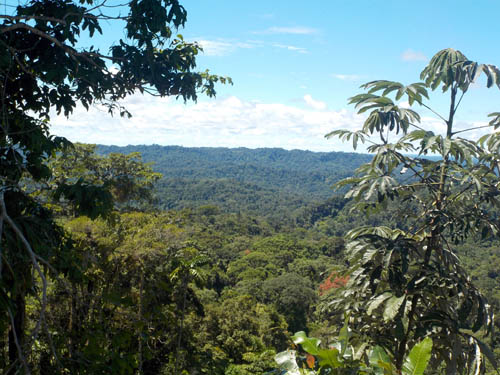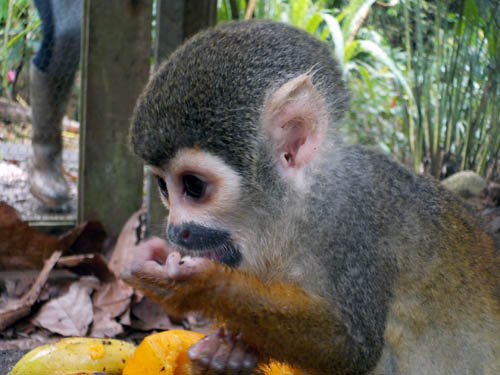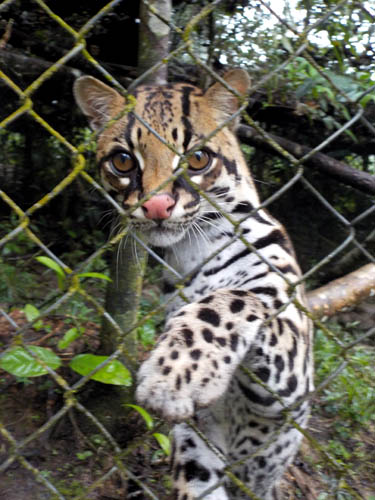Spanish Course + Volunteer Work
Animal Welfare / Ecuador
May 2018
(cortesy translation from German)
I can only say in advance: During my trip I had so many new experiences and impressions ... It was amazing! So, let's go one by one:
Spanish course in Cuenca
When I arrived in Cuenca, I was greeted by a member of my host family. I immediately recognized the family member because he was holding a sign with my name on it. I was so incredibly relieved that it worked so easily after the very long and exhausting flight! During the first part of my trip I took part in the Spanish course in Cuenca and lived with my host family during that time, who welcomed me warmly and they made me feel like a part of their family. Even if we didn't always understand each other because of the language barrier, it still had an amazing time with my host family! I had booked a 20-hour one-to-one course for two weeks.
At the beginning I was a bit skeptical about the individual course. But this skepticism vanished on the first day of class! My Spanish teacher was so nice and professional, the one-to-one lessons made it possible for me to quickly improve my still very sparse Spanish skills! Since the language school offered various activities in the afternoon, I quickly got in touch with other students and had a lot of fun! Sure, my teacher also gave me homework - but, after all, I wanted to learn something! Homework is part of it! My knowledge of Spanish has really improved significantly over the two weeks, even though I am still far from having a fluent conversation in Spanish.
I was also totally positively surprised by the city of Cuenca! There are many museums and many small and large parks worth visiting! The houses in the city were really beautiful too, so you can really enjoy strolling through the streets of Cuenca! I was always on my own and never worried about my safety. Even in the dark (it will be dark in Cuenca from 6:30 p.m. at the latest), Cuenca is still a safe city. At night (from 10 p.m.), however, I would advise solo travelers (especially women) to take a taxi.
Animal shelter in the jungle
After two weeks my stay in Cuenca was over. I took an intercity bus from Cuenca to Puyo at night. When I arrived in Puyo, I was quickly picked up by two employees of the animal sanctuary and driven into the jungle to the rescue station. The first thing I saw on the spot was a red macaw sitting in a nearby tree, making occasional rounds of the jungle and station. I was immediately blown away! Since I arrived at the animal sanctuary on a Sunday and this day is a day off for the volunteers, I had time to look around a bit. The animal enclosures are adapted to the needs of the animals and fit seamlessly into the jungle - just as if they belonged there! The paths to the enclosures were sometimes no more than "footpaths". The next day the actual work started. This included preparing the food for the animals, cleaning the house, cooking with the other volunteers and, of course, cleaning the enclosures and feeding the animals. When distributing the tasks, it is always ensured that everyone receives each task once. Since some animals were saved from private households, many of them are quite used to humans. Already on the first day I met an incredibly nice monkey lady who immediately jumped on my shoulder and loused me.
During my time there were various species of monkeys in the animal sanctuary itself, but also coati, macaws, parrots, toucans, ocelots and pigs (but also large wild spiders - you have to be aware of this). In one day I was also able to witness how animals were released. Unfortunately, this doesn't happen that often, which is why I was particularly happy to see this happen! Life in the jungle is very simple - but incredibly great! It is indescribable to wake up in the morning and see a wild monkey swinging through the trees! The sounds of the jungle are also just amazing and I even miss this here in my home country. The volunteers also got on very well and, for example, spent the free weekend together in Baños (a town that is about 2 hours away from the animal sanctuary). The most important utensil in the jungle is the machete 🙂 I used it to cut food but also felled trees for the construction of new enclosures.
It was also our job to catch grasshoppers for the monkeys or to go fishing. The areas of responsibility are widely spread and therefore incredibly varied and interesting! The physically demanding work made me smile every evening because I knew I was doing something good for the animals.
In summary, I can say that my expectations of the jungle were far exceeded! Everyone has an idea of what it's like in the jungle. But all these ideas are nothing compared to reality! When you stand in the jungle and look around and notice all the plants and the loud noises of the jungle, you quickly realize that it is much better there than you could ever have imagined!
It is particularly positive that I was quickly given a super friendly answer to every little question from South America Inside. Therefore I would really like to send many many thanks to my contact personas Maite and Svenja!!!





